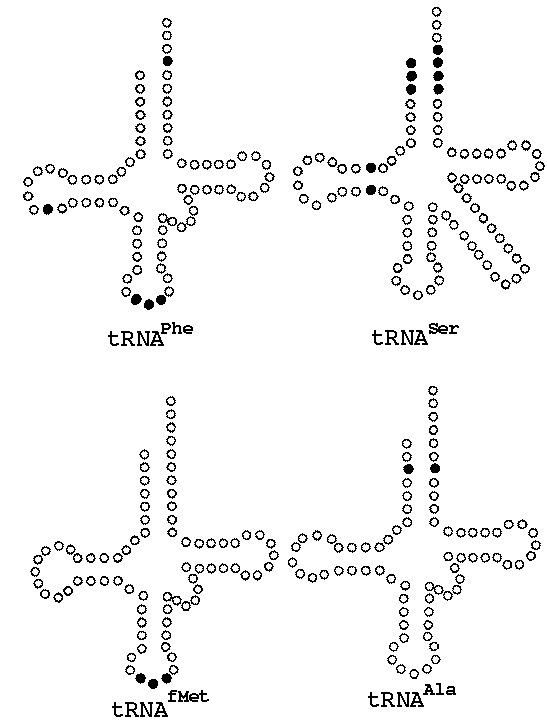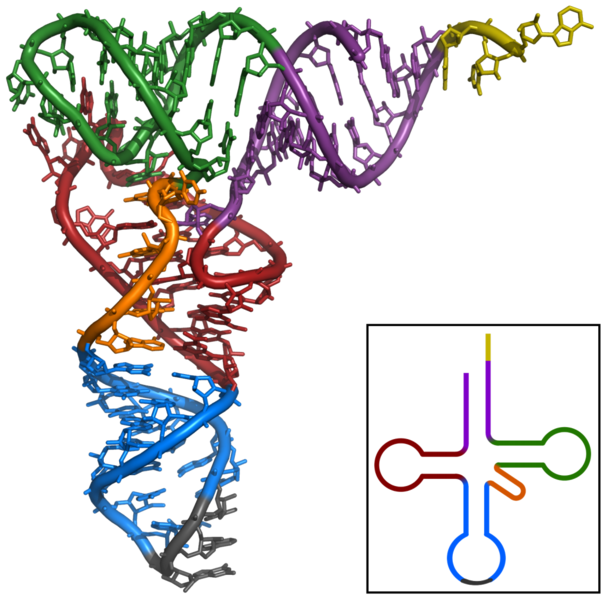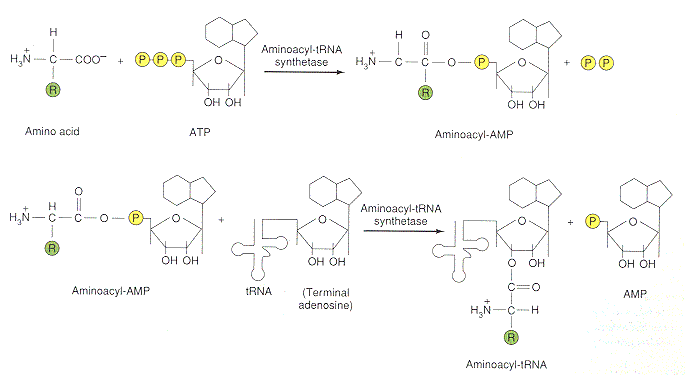
- •MicroRna (miRna)
- •Splicing
- •Editing
- •Polyadenylation
- •Transport
- •A hairpin loop from a pre-mRna. Highlighted are the nucleobases (green) and the ribose-phosphate backbone (blue).
- •Three-dimensional representation of the 50s ribosomal subunit. Rna is in ochre, protein in blue. The active site is in the middle (red). Translation
- •Inside the ribosome
- •Prokaryotes vs. Eukaryotes
- •Key discoveries in rna biology
- •TRna Function: Synthetases
- •Accuracy & Proofreading
TRna Function: Synthetases
Each tRNA is charged with the proper amino acid via a covalent ester bond at its 3' end by a family of enzymes called aminoacyl-tRNA synthetases. Each enzyme must recognize both the tRNA(s) specific for an amino acid and the corresponding amino acid. This energy-consuming process is ATP-dependent and results in the cleavage of two high-energy phosphate bonds (one in going from ATP to AMP + PP, and one for the cleavage of pyrophosphate into two inorganic phosphates:

There are 20 different aminoacyl-tRNA synthetases, one for each amino acid. Despite the fact that they all carry out very similar tasks, they vary greatly in size (40-100 kDalton).
Since there are 61 amino acid codons, most tRNA synthetases must be able to recognize more than one type of tRNA (i.e. 6 codons for Arg). These tRNAs are calledcognate tRNAs for that particular synthetase. This mapping is achieved through so-called recognition domains on the tRNA. In the figures below (a result using x-ray crystallopraphy - yeah!), tRNA is shown with a red backbone and yellow bases; tRNA synthetase is shown as a space-filling model in blue:

The recognition domains include unique sections of the acceptor stem, loops and/or the anticodon (black dots):

Accuracy & Proofreading
The accuracy of charging tRNA with the proper amino acid is crucial because once charged, only the t
 RNA anticodon determines
incorporation, not the
attached amino acid.
RNA anticodon determines
incorporation, not the
attached amino acid.
The error rate of charging is very low: 1 error in 10,000 charging reactions. This is achieved by mean:
the amino acid specificity pocket in a specific synthetase will only bind amino acids similar in size and charge.

An exmaple of the crystal structure of Yeast Phenylalanine tRNA.
When an amino acid binds to the 3'-end of a tRNA, we say the tRNA is charged with that amino acid. The amino acid group and the hydroxyl group are linked together by an ester bond.


